Polish Pavilion
Polish Pavilion at Expo 2020 Dubai References the Flight of Birds Through Kinetic Sculpture
WXCA, Bellprat Partner
Poland Pavilion, Dubai expo 2021
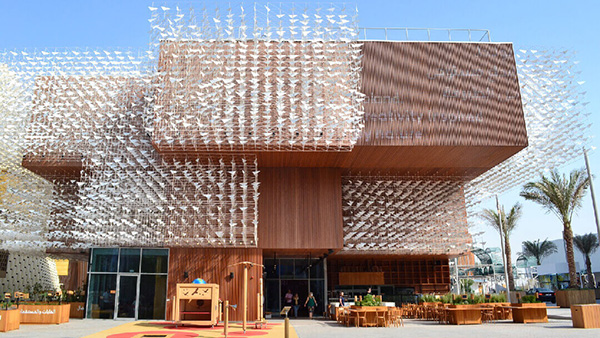
Designed by Warsaw-based architecture practice WXCA and Swiss studio Bellprat Partner, the Polish Pavilion for Expo 2020 Dubai is a nod to the country’s natural landscapes representing an essential part of Polish identity. Through a modular structure enveloped by a kinetic sculpture resembling a flock of birds, the project references the idea of mobility while showcasing the natural connection established by bird migration between Poland and UAE.
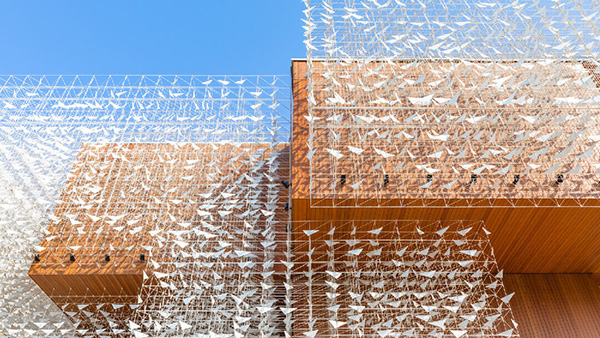
Located within the Mobility District, the three-story Pavilion is an assemblage of timber “boxes” encased within a kinetic sculpture symbolizing the migration of birds from Poland to the Arab Peninsula. “This is a natural [link] that comes to our minds when we talk of the relations and ties between [the two regions],” says Adrian Malinowski, Commissioner General of the Poland Pavilion.
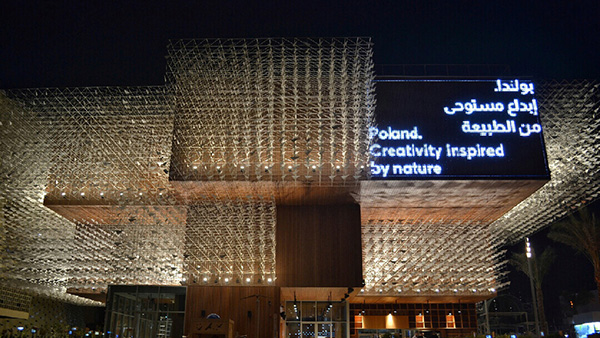
The installation is made of aluminium alloy modules that flutter with the movement of air. The sculpture is reiterated at the interior of the Pavilion, creating a seamless experience. The choice of timber harvested from South-Eastern Poland was motivated by the possibility to dismantle and repurpose the structure more easily.
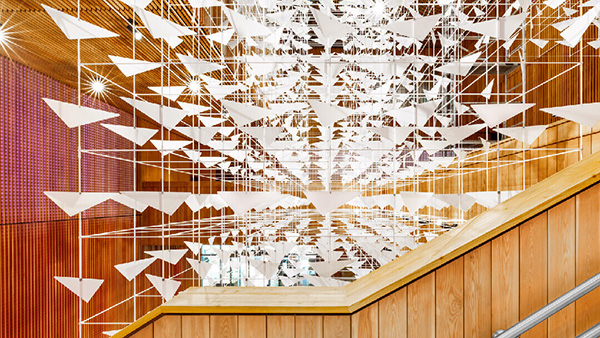
The Pavilion’s visitors will have a chance to stop and take a rest in the shade provided by the dynamic shape of the building. It will be an unforgettable yet relaxing experience: to reconnect with nature by listening to the rustling wind, to surrender yourself to the spell of movement of the kinetic sculpture on the facade – a symbol of the flocks of migrating birds” – Marta Sękulska-Wrońska, architect and partner at WXCA.
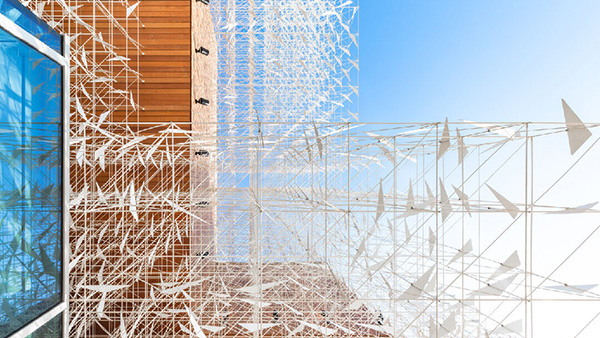
The exhibition experience designed by WXCA and Bellprat Partner, in collaboration with Amsterdam-based studio Tellart, Polish creative studio Science Now and production company Stellar Fireworks, aims to “convey Poland’s focus on ingenuity inspired by nature”, exploring two main aspects: the social capital and natural environment.
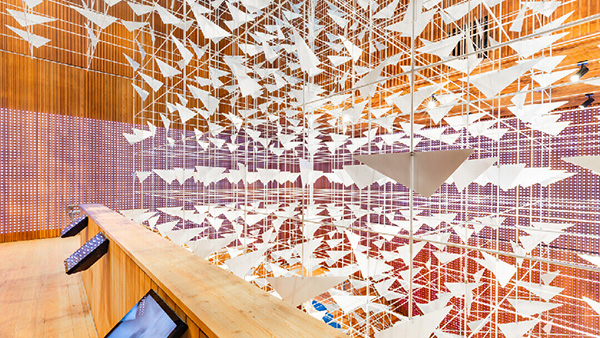
The waiting area provides visitors with a sample of Polish landscapes, conveyed through a series of soundscapes, video stories, poetry, and artistic illustrations that portray a diversity of settings from forests, mountains, wetlands, and lakes. Inside the Pavilion, the interactive, voice-activated installation of the Polish Table recreates Polish topographies, referencing various nature and design-related narratives.
Reference: archdaily.com, Polish Pavilion




























Comments